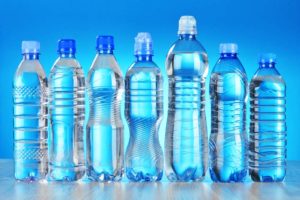Is your body a toxic wasteland? – Part 1 by Dr. Chris Bjorndal, ND
Is your body a toxic wasteland? – Part 1
When comparing our modern-day lives with those of our grandparents, it is clear that our environment has changed greatly. Not just the natural world, but in our day-to-day lives as well. We are exponentially exposed to more chemicals, toxins, and different forms of radiation than the generations before us. At the same time chronic disease rates are soaring and researchers are making connections between what is in our environment and why we are getting sick. Environmental exposures are a serious concern not only for our world today, but for our health. You can take control of your health by paying attention to and limiting your personal environmental exposures.
Below is part one of a three-part series on environmental exposures and their solutions. The solutions are based on the questions posed in our Environmental quiz – please take the quiz today!
- Problem: Full-sugar soft drinks and diet soft drinks
It is well recognized that sugary soft drinks are unhealthy for many reasons – they increase overall calorie intake, they create inflammation in the body and they disrupt proper insulin levels. All of this contributes to some of the most common chronic health problems of our time: obesity, autoimmunity, cancer, heart disease and diabetes. It is now also coming to our awareness that sugar-free ‘diet’ colas may be just as dangerous for our health. A large study in 2013 showed sugary and diet sodas both significantly increase the risk of developing type 2 diabetes.7 Harvard Health concludes they also contribute to obesity by tricking the brain into thinking it’s not tasting sweet things, resulting in even higher cravings for sweet after drinking diet colas. Furthermore, it has been suggested and remains unclear if aspartame increases risk of cancer, urging researchers for more investigation.2
Solution: Cut down or eliminate full-sugar and diet soft drinks form your diet. Some new research suggests replacing these with drinks containing stevia or other sugar alcohols, such as xylitol. Although studies show that stevia does not raise insulin levels (a major risk for diabetes) as much as sugar, no long-term studies have been done on these sweeteners, and they have not been approved by the American Food and Drug Administration (FDA).1, 14
- Problem: Plastic bottles and containers
 Bisphenol A (BPA) is a chemical present in most plastics and in the lining of canned foods. It is a known endocrine disruptor, meaning it interferes with the body’s hormones. It has been clearly linked with negative birth outcomes, infertility, thyroid dysfunction, increased risk of cancer, obesity and insulin resistance.9,15,17 The most sensitive population to the negative effects of chemicals in plastics are pregnant women, children and infants. Phthalates are another similarly acting class of chemicals found in plastics.
Bisphenol A (BPA) is a chemical present in most plastics and in the lining of canned foods. It is a known endocrine disruptor, meaning it interferes with the body’s hormones. It has been clearly linked with negative birth outcomes, infertility, thyroid dysfunction, increased risk of cancer, obesity and insulin resistance.9,15,17 The most sensitive population to the negative effects of chemicals in plastics are pregnant women, children and infants. Phthalates are another similarly acting class of chemicals found in plastics.
Solution: Because plastics are used ubiquitously in today’s world the best solution is to reduce your exposure as much as possible. Use a stainless steel or glass water bottle, purchase products and canned food packaged with a BPA-free liner, use glass Tupperware or use activated charcoal filters for drinking water. This is an important topic to be discussed with your ND.
- Problem: Storing hot food in plastic containers and/or heating food in plastic containers
When heated, plastics begin to break down. The harmful chemicals (discussed above) found in the plastic leach into food and liquids, increasing the harmful hormone-disrupting effect on your body. 9,12
Solution: Use glass or lead-free ceramic containers to reheat food in the oven or heat food on the stove-top. Replace all plastic Tupperware with glass. Don’t let plastic wrap touch hot food. Avoid using a microwave as much as possible, but if you choose to use one, make sure all materials are microwave-safe and containers are vented before microwaving.
- Problem: Non-stick frying pans
For decades, non-stick frying pans have been coated with polytetrafluoroetheylene (PTFE), otherwise known as Teflon. It has been shown that when heated, Teflon releases toxic fumes that can kills birds and cause humans to have flu-like symptoms, coining the term “Teflon flu”. Manufacturers claim this only occurs when Teflon is over-heated, but tests have shown that toxic fumes are released within 2-5 minutes of conventional stovetop use.6 Chemicals from the same family as Teflon are associated with smaller birth weight and size in newborn babies when pregnant women are exposed, elevated cholesterol, abnormal thyroid hormone levels, liver inflammation and weakened immune defence against disease.
Solution: Skip the Teflon! There are much better alternatives. Cast iron pans for example, are not only non-toxic, but they even provide some of your daily iron. Stainless steel pans are also a preferable option. If you already have Teflon pans and want to know how to be safer when using them, be sure to use the fan in the fume hood, use the lowest possible temperature to cook your food, don’t heat empty pans as this can cause overheating very quickly and do not use your Teflon pan if it is scratched or damaged in any way.
- Problem: Vitamin mineral water
These beverages are marketed as a healthy way to hydrate and get your vitamins, but many brands of vitamin-containing water are loaded with sugar. A bottle of the popular brand Vitaminwater, for example, contains 33g of sugar, almost as much as a can of Coca-Cola which has 38g.16 Other brands use sweeteners or fructose, which are known to disrupt sugar metabolism and alter blood sugar levels and contribute to diabetes and weight gain.8 The consensus is that these drinks confer no added benefit over water and only add calories and sugar to your diet.
Solution: Drink lots of filtered water to keep you from getting dehydrated. Splash some lemon or lime into it to get some flavour and vitamin C. Talk with your ND to discuss if your diet is giving you the vitamins you need or if you need individualized vitamin supplementation.
- Problem: Microwave use
Microwaves emit a form of non-ionizing radiation (as opposed to x-rays) that vibrates water molecules to create heat. Although microwaves are under strict manufacturing regulation to minimize human exposure to this radiation, older and dirty microwaves and aging door seals can allow for large radiation leakage to reach us.18 Exposure from high leakage can cause DNA damage to our cells and even interfere with some early-model pacemakers. It is unclear whether the radiation changes the nutritional content or alters the safety of the food, unless it is being microwaved in a plastic container, in which case it is more dangerous.13
Solution: When possible, heat foods and liquids on the stove-top or in the oven. If using a microwave, check door seal for safety. Stand in another room when appliance is on, or at least 1.5 meters away. Make sure food containers are uncovered or vented to allow steam to escape and always avoid plastics in the microwave.
- Problem: Cell phone use (>3hrs/day)
Computers and cell phones emit non-ionizing radiation into the body and cause DNA damage. A large meta-analysis of cell phone use shows a consistent association between mobile phone use and certain types of brain tumours – with the most amount of time per day using a cell phone correlated with the highest incidence of brain tumours.7 Another study shows the negative effect of radiation on the function of the thyroid gland, pointing to the broad impact of radiation on many tissues in the body.11 When cell phones are used by children, the impact on the brain is two times higher and up to ten times higher in the bone marrow of the skull, compared with adults.4
Solution: Minimize use of a mobile phone for yourself and especially for your children. When possible, use a hands-free Bluetooth device to effectively reduce exposure. Don’t carry your cell phone in your pocket and leave it away from you on your desk. Take breaks from computer use and limit desk-time for many health reasons that go beyond limiting radiation. In addition, the stone shungite is purported to protect against radiation and can be worn as a necklace. Also available are electromagnetic frequency (EMF) neutralizers, such as the Bio-dot chips and pendants, designed to scramble non-ionizing radiation enough to reduce DNA damage. Please stop by the clinic to pick up your Bio-dot chip today!
Sources:
- Anton, S. D., Martin, C. K., Han, H., Coulon, S., Cefalu, W. T., Geiselman, P., & Williamson, D. A. (2010). Effects of stevia, aspartame, and sucrose on food intake, satiety, and postprandial glucose and insulin levels. Appetite, 55(1), 37-43.
- Aune, D. (2012). Soft drinks, aspartame, and the risk of cancer and cardiovascular disease. The American journal of clinical nutrition, 96(6), 1249-1251.
- https://authoritynutrition.com/5-reasons-why-vitaminwater-is-a-bad-idea/
- Baan, R., Grosse, Y., Lauby-Secretan, B., El Ghissassi, F., Bouvard, V., Benbrahim-Tallaa, L., … & Straif, K. (2011). Carcinogenicity of radiofrequency electromagnetic fields. The lancet oncology, 12(7), 624-626.
- http://emwatch.com/microwave-oven-radiation/
- Environmental Working Group 2013.http://www.ewg.org/research/healthy-home-tips/tip-6-skip-non-stick-avoid-dangers-teflon
- Fagherazzi, G., Vilier, A., Sartorelli, D. S., Lajous, M., Balkau, B., & Clavel-Chapelon, F. (2013). Consumption of artificially and sugar-sweetened beverages and incident type 2 diabetes in the Etude Epidémiologique auprès des femmes de la Mutuelle Générale de l’Education Nationale–European Prospective Investigation into Cancer and Nutrition cohort. The American journal of clinical nutrition, 97(3), 517-523.
- Hardell, L., Carlberg, M., Soderqvist, F., & Hansson Mild, K. (2008). Meta-analysis of long-term mobile phone use and the association with brain tumours. International journal of oncology,32(5), 1097-1104.
- Harvard Health https://www.hsph.harvard.edu/nutritionsource/healthy-drinks/artificial-sweeteners/
- Harvard Health https://www.hsph.harvard.edu/news/magazine/winter10plastics/
- Harvard Health http://www.health.harvard.edu/staying-healthy/microwaving-food-in-plastic-dangerous-or-not
- Mortazavi, S. M. J., Habib, A., Ganj-Karimi, A. H., Samimi-Doost, R., Pour-Abedi, A., & Babaie, A. (2015). Alterations in TSH and thyroid hormones following mobile phone use. Iranian Journal of Medical Sciences, 34(4), 299-300.
- http://www.npr.org/2011/03/02/134196209/study-most-plastics-leach-hormone-like-chemicals
- https://www.safespaceprotection.com/news-and-info/microwave-oven-dangers/
- Shwide-Slavin, C., Swift, C., & Ross, T. (2012). Nonnutritive sweeteners: where are we today?.Diabetes Spectrum, 25(2), 104-110.
- Soto, A. M., & Sonnenschein, C. (2010). Environmental causes of cancer: endocrine disruptors as carcinogens. Nature Reviews Endocrinology, 6(7), 363-370.
- http://www.sugarstacks.com/beverages.htm
- Wang, T., Li, M., Chen, B., Xu, M., Xu, Y., Huang, Y., … & Liu, Y. (2011). Urinary bisphenol A (BPA) concentration associates with obesity and insulin resistance. The Journal of Clinical Endocrinology & Metabolism, 97(2), E223-E227.
- World Health Organization: Electromagetic fields and public health: microwave ovens. http://www.who.int/peh-emf/publications/facts/info_microwaves/en/



